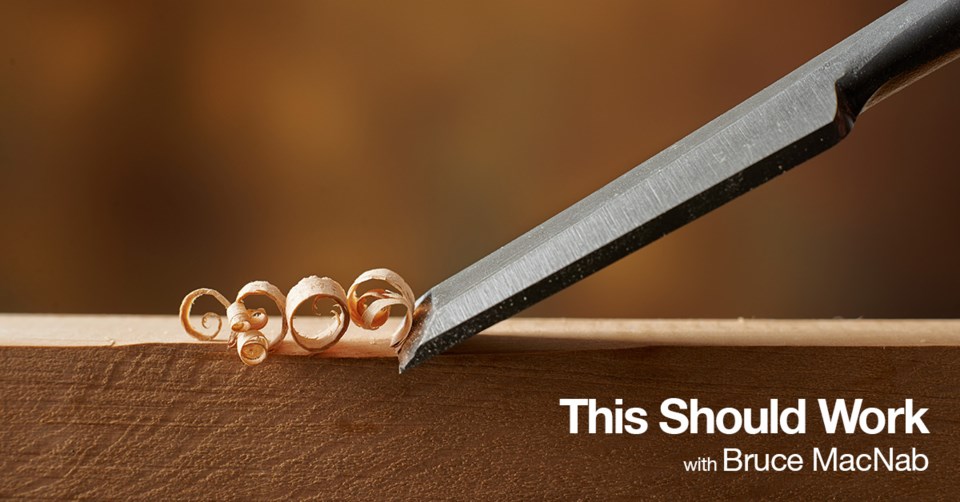When you’re renovating, it’s always tempting to peel back walls and ceilings to bare framing. Sure, this makes it easier to install wiring, plumbing and insulation. But if you have plaster walls, you’re in for a mess if you gut them.
Afterwards your walls have to be dry-walled and the trim reinstalled — all at your cost. It’s better to work like a surgeon, opening up no more holes than necessary.
A good electrician can rewire a house with almost no damage. Plumbers will have to bash holes here and there because their pipes don’t bend like wires. These guys are hardly delicate, especially when it comes to punching holes in plaster walls. The good news is their damage can be fixed with inexpensive drywall patches.
 Bruce used a paper template to create this zany drywall patch. Photo by Bruce MacNab.
Bruce used a paper template to create this zany drywall patch. Photo by Bruce MacNab.Many homeowners make the same mistake: they start at the damaged area and try to beat the plaster back to a square or rectangular shape. It’s better to remove only the loose plaster and leave whatever shape remains. This creates a brand new problem. How do you cut a drywall patch that looks like a map of Newfoundland?
Paper templates are foolproof. You can use them for everything: tiles, drywall, wood, flooring and more. To start, cut a piece slightly larger than the patch area. I often use three-foot wide dry sheathing paper for bigger templates. I tack the paper to the wooden lathes with ordinary thumbtacks.
Using a sharp knife you can carefully cut the paper along the edge of the plaster, which you can feel through the paper. Before you know it, you’ll have an accurate template of your required patch. Don’t be too accurate — your patch must be slightly smaller than the hole.
Trace your paper template onto a piece of drywall, and cut your patch using a drywall saw. Most plaster ranges in thickness from a quarter-inch to three-eighth inch. Luckily, both quarter-inch and three-eighth inch drywall panels are available.
Screw your patch to the lathes using drywall screws. Use a dimple bit in your drill to set the screws slightly below the drywall surface.
Once your patches are installed, they can be finished with fibreglass tape and drywall compounds. This is more difficult than it looks.
You should practice drywall finishing in someone else’s house before you tackle your own home. Or hire a professional — you can afford one now that you’ve saved some cash by not gutting your plaster walls.
Bruce MacNab, a Red Seal carpenter, has taught carpentry courses for NSCC and the Guysborough County Adult Learning Association. Visit him online at thisshouldwork.ca
